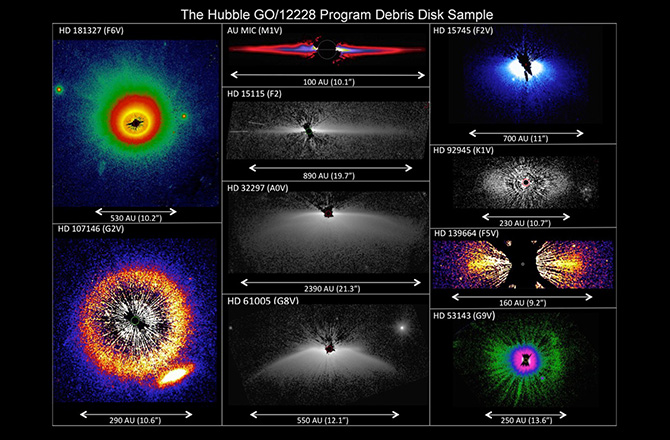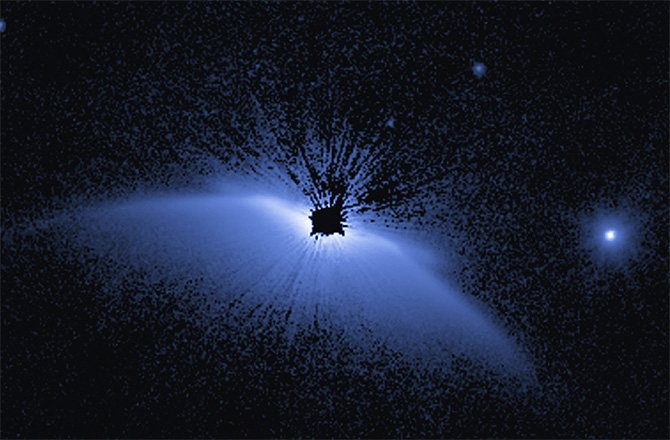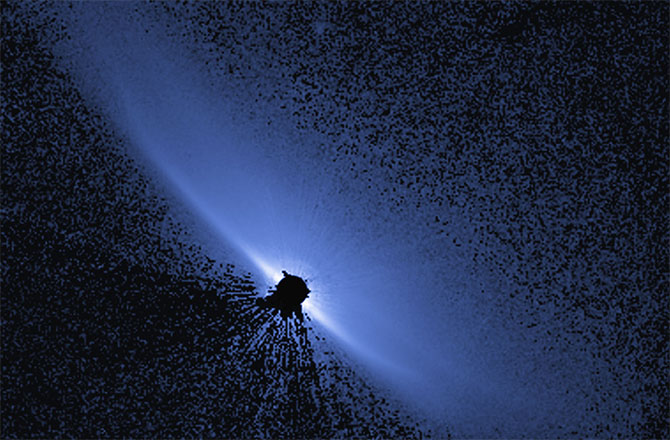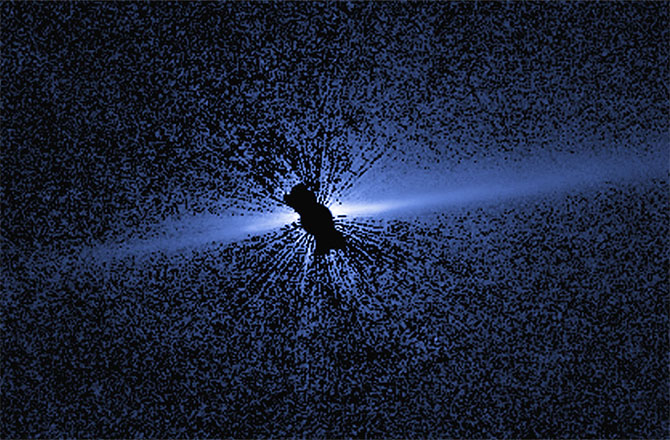.

Astronomers using the Hubble Space Telescope recently completed the largest and most sensitive survey of dust surrounding young star systems. The survey zoomed-in on stars that are between 10 million to 1 billion years old and the source of the dust is thought to be the left-over debris from planet, asteroid and comet collisions after systems of planets have formed.
The research is akin to looking far back into the history of our solar system, seeing the inevitable dusty mess left over after the Earth and other planets evolved.
"It's like looking back in time to see the kinds of destructive events that once routinely happened in our solar system after the planets formed," said Glenn Schneider, of the University of Arizona's Steward Observatory and lead scientist on the survey team.
.

THE IRREGULAR SHAPE OF THE CIRCUMSTELLAR DISK SURROUNDING THE STAR HD 61005
One of the major findings to come from this survey is the stunning diversity of dust surrounding these young stars. Traditionally, circumstellar dust is thought to settle into an orderly disk-like shape -- but it turns out that the opposite is true.
"We find that the systems are not simply flat with uniform surfaces," said Schneider. "These are actually pretty complicated three-dimensional debris systems, often with embedded smaller structures. Some of the substructures could be signposts of unseen planets."
.

EVIDENCE OF A PLANETARY COLLISION AROUND HD 181327?
One stunning observation of the star HD 181327 exhibits a bright ring of dust containing irregularities, potential evidence of a massive collision that has scattered debris far and wide.
"This spray of material is fairly distant from its host star — roughly twice the distance that Pluto is from the Sun," said Christopher Stark of NASA's Goddard Space Flight Center, Greenbelt, Md., and co-investigator in the survey team. "Catastrophically destroying an object that massive at such a large distance is difficult to explain, and it should be very rare. If we are in fact seeing the recent aftermath of a massive collision, the unseen planetary system may be quite chaotic."
Another interpretation for the irregularities could be some kind of interaction with unseen interstellar material.
"Our team is currently analyzing follow-up observations that will help reveal the true cause of the irregularity," added Schneider.
.

THE EXTENSIVE CIRCUMSTELLAR DISK OF DUST SURROUNDING HD 32297
Like the diversity of exoplanetary systems astronomers have discovered, it appears the accompanying dust disks also share this characteristic, possibly indicative of gravitational interactions with planets orbiting the stars surveyed by Hubble.
"How are the planets affecting the disks, and how are the disks affecting the planets? There is some sort of interdependence between a planet and the accompanying debris that might affect the evolution of these exoplanetary debris systems," said Schneider.
.

THE CIRCUMSTELLAR DISK SURROUNDING HD 15115
Since 1995, thousands of exoplanets have been discovered orbiting stars in our galaxy. Over the same period, however, only a couple of dozen circumstellar disks have been imaged directly. This is down to the fact that the scattered light off these disks is extremely faint (around 100,000 times fainter than the parent star's light). The technology and techniques are only recently becoming available for scientists to not only block the star's blinding light, but to also boost the sensitivity of observations to pick out this scattered light that would otherwise be obscured from view. Fortunately, Hubble's high-contrast imaging has been key in making this survey a success.
Quelle: NASA
5448 Views
